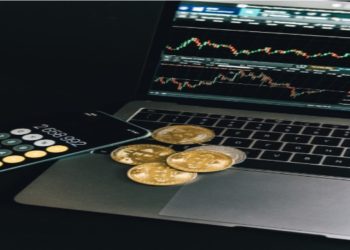At first glance, the logic behind the Martingale strategy feels deceptively simple. If a trade goes against you, you double the size of your next position. Eventually, one trade wins, and it’s large enough to recover all previous losses, with profit. On paper, it may appear to be a surefire approach to beating the market.
But real trading doesn’t happen on paper. In the world of forex, where volatility spikes often and trends can stretch longer than expected, the Martingale strategy forex method introduces some of the highest risk you’ll encounter.
For traders who are exploring high-reward methodologies or stress-testing their risk appetite, understanding how Martingale plays out in practice is essential. Because while the system may offer short-term gains, its long-term survival depends on more than just courage. It depends on capital depth, market timing, and disciplined execution in unpredictable conditions.
What the Martingale Strategy Is and What It Assumes
The Martingale approach comes from probability theory and was originally applied to games of chance. The concept is straightforward: after every loss, you double your next bet. Eventually, a win will come, and that single win will cover all previous losses and deliver a net gain equal to the size of your original stake.
In forex, the logic is applied to trade sizing:
- A trader opens a position.
- If the position loses, they open a new position in the same direction but at double the lot size.
- This continues until a winning trade closes the series and returns the account to profit.
- After a win, position size resets to the original lot.
The assumption here is twofold:
- That a win is inevitable, eventually.
- The trader has sufficient capital to survive the losses it takes to get there.
It’s easy to see the appeal in a tightly ranging or mean-reverting market. But these assumptions don’t always hold, especially when directional trends extend far beyond historical norms.
How It Plays Out in Forex Trading
Unlike fixed-odds games, the forex market is fluid, unbounded, and subject to global macroeconomic pressures. Price doesn’t just fluctuate within a predictable range. It can trend hard, break long-standing levels, and defy technical setups for longer than expected.
This is where the risk in the Martingale approach becomes real.
Each losing trade doubles the size of your exposure. If you start with one micro lot (1,000 units), your sequence might look like this:
- First trade – 1 micro lot
- Second trade – 2 micro lots
- Third trade – 4 micro lots
- Fourth trade – 8 micro lots
- Fifth trade – 16 micro lots
- Sixth trade – 32 micro lots
By the sixth position, you’re 32 times more exposed than you were at the beginning. And that’s just to recover one pip’s worth of movement.
In theory, you could win and reset. In practice, most traders don’t have the capital cushion or the psychological stamina to withstand this type of drawdown. One persistent trend can drain an account long before the market returns to a favourable level.
Why It’s Still Used and by Whom
Despite the risks, Martingale still sees use among traders in specific contexts:
- Algorithmic systems that manage risk based on statistical patterns
- Low-volatility range traders using tight grids and high capital buffers
- Hedge strategies where Martingale is part of a multi-directional model
Some traders are drawn to it because it shows consistent returns in the short term, especially in sideways markets. Small profits stack up quickly, giving the appearance of reliability. However, this often masks the underlying exposure that is building beneath the surface.
In fact, Martingale systems tend to have a high win rate, which can encourage overconfidence. The danger is that when a loss finally lands, and it always does, it wipes out weeks or even months of small gains in a single event.
What Happens in Real Market Conditions
In volatile conditions, Martingale’s weaknesses are amplified. Take a week with a major central bank announcement or geopolitical instability. A currency pair can trend aggressively without pullback. If you’re on the wrong side of that move and doubling down at each interval, your exposure builds exactly when your position is least defensible.
Slippage also becomes a factor. Larger trades executed during low liquidity can open at worse-than-expected prices. If you’re doubling position size, each pip of slippage becomes significantly more damaging to your equity.
And remember, brokers often limit maximum lot sizes or margin usage. That means your ability to continue doubling down may be cut off long before your trade has a chance to return to profit, which is a common reason why Martingale blow-ups happen when they do.
How Martingale Connects to Risk Psychology
One of the hardest things about Martingale is the mindset. Doubling your position into a losing trade goes against everything conservative risk management teaches. It encourages traders to “fight” the market, hold onto bias longer than is reasonable, and risk more than they would normally tolerate.
For new traders, this can lead to emotional decision-making, revenge trading, and rapid loss spirals. Even for experienced professionals, sticking to Martingale rules under pressure can be mentally exhausting.
That emotional load often surfaces at the exact moment when clarity is most needed. The more a trader hopes for a reversal, the harder it becomes to cut the position and reassess.
Where the Strategy Fits and Where It Doesn’t
There are limited situations where Martingale-inspired structures can work, but they almost always require tight rules, deep capital, and strong supporting logic. Examples include:
- Controlled grid systems in ultra-stable pairs
- Hedging techniques that offset directional risk
- Portfolio-sized strategies where only a small slice is exposed
But in directional trading, especially during high-impact news or uncertain macro periods, Martingale is simply too fragile. One missed move or one miscalculated trend can put the entire account at risk.
The vast majority of traders are better served by more flexible, scalable risk frameworks, where exposure is adjusted based on volatility, conviction, and available capital, not fixed rules about doubling down.
What to Do Instead – Smarter Position Management
Rather than relying on Martingale, many traders focus on strategies that adapt position size based on:
- Account percentage risk (e.g. 1% per trade)
- ATR-based stop losses tied to volatility
- Scaling in or out of positions based on price action
- Dynamic reward-to-risk assessments
These techniques prioritise longevity over perfection. They allow losses without cascading exposure and create room for recovery without risking full account depletion.
For traders interested in complex systems, Martingale can be studied as part of risk modelling. But it should never be treated as a plug-and-play system, especially not in live markets with real money on the line.
Testing Martingale in Safe Environments
If you’re curious about how the Martingale strategy behaves in live market conditions, the safest way to explore it is through a demo or simulated account.
Platforms offered by providers like ThinkMarkets give you access to real-time data, flexible order types, and the ability to track performance over time, all without risking capital. This allows you to observe how doubling down affects drawdowns, equity curves, and emotional bias.
Understand the Math, Respect the Risk
There’s a reason Martingale continues to be discussed, tested, and used. It taps into something that appeals to traders: the idea of always recovering. But markets don’t move in ways that make this consistently viable. They punish overexposure, test conviction, and stretch trends far beyond where theory would expect them to end.
It’s not wrong to explore it. In fact, understanding why it fails can teach you more about leverage, sizing, and market behaviour than many “safe” strategies ever will. Just remember, in trading, sustainability is the goal. If a system can’t survive real-world pressure, then its win rate doesn’t matter.
FAQs
Is the Martingale strategy ever safe to use in forex?
No strategy is truly “safe” in a leveraged market, but Martingale can be particularly risky due to its exponential exposure. If used at all, it should be tested thoroughly in demo environments and applied only with strict capital controls and predefined limits.
What’s the biggest danger of using a Martingale approach?
The primary risk is account depletion. A prolonged losing streak, especially during trending or volatile periods, can cause drawdowns that exceed your available margin before a recovery occurs.
Can Martingale work with risk management?
Only if it’s part of a more complex system that caps exposure, uses hedging, or limits the number of iterations. On its own, Martingale lacks a natural stop-out level, which makes traditional risk management difficult.













































































